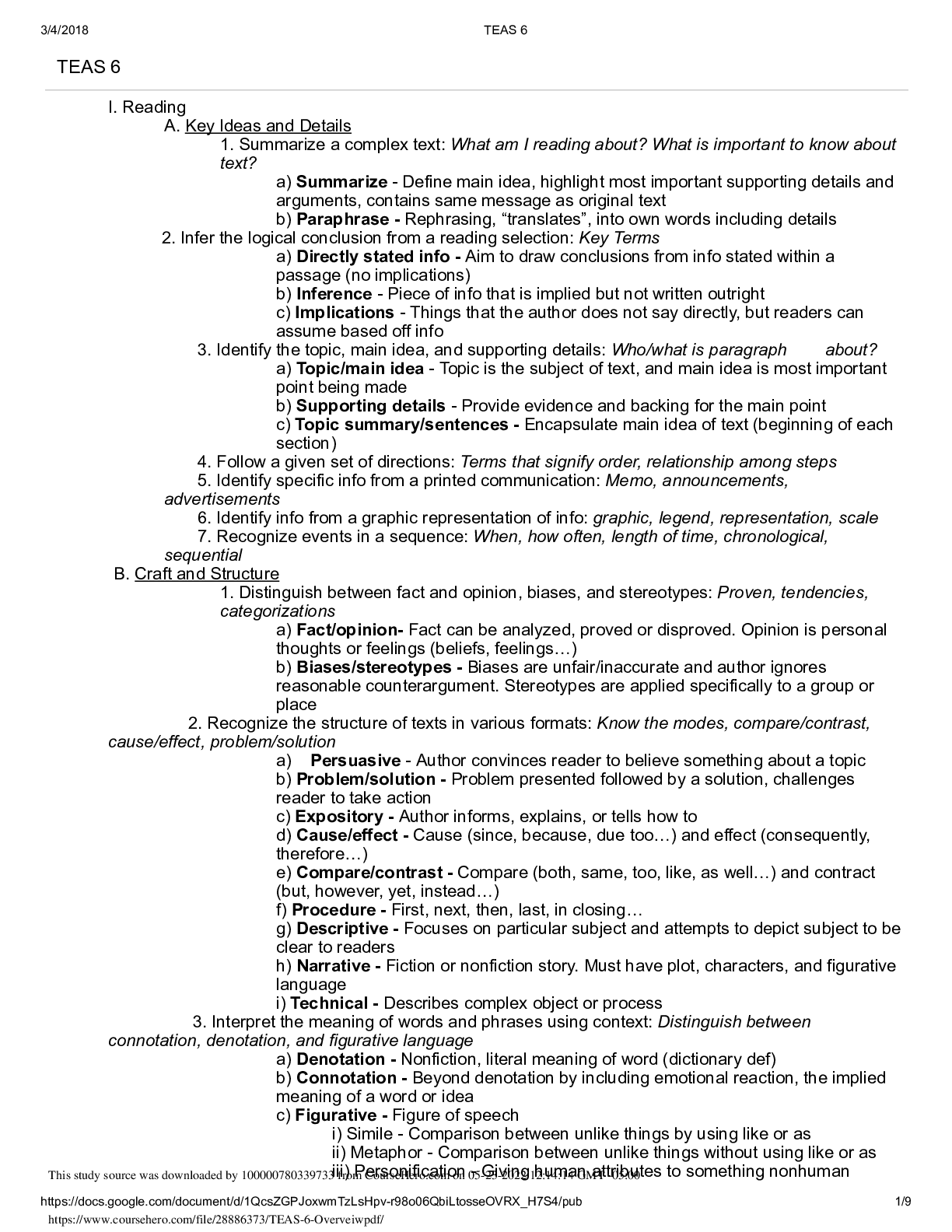I. Reading
A. Key Ideas and Details
1. Summarize a complex text: What am I reading about? What is important to know about
text?
a) Summarize - Define main idea, highlight most important supporting details and
arguments, contains same message as original text
b) Paraphrase - Rephrasing, “translates”, into own words including details
2. Infer the logical conclusion from a reading selection: Key Terms
a) Directly stated info - Aim to draw conclusions from info stated within a
passage (no implications)
b) Inference - Piece of info that is implied but not written outright
c) Implications - Things that the author does not say directly, but readers can
assume based off info
3. Identify the topic, main idea, and supporting details: Who/what is paragraph
about?
a) Topic/main idea - Topic is the subject of text, and main idea is most important
point being made
b) Supporting details - Provide evidence and backing for the main point
c) Topic summary/sentences - Encapsulate main idea of text (beginning of each
section)
4. Follow a given set of directions: Terms that signify order, relationship among steps
5. Identify specific info from a printed communication: Memo, announcements,
advertisements
6. Identify info from a graphic representation of info: graphic, legend, representation, scale
7. Recognize events in a sequence: When, how often, length of time, chronological,
sequential
B. Craft and Structure
1. Distinguish between fact and opinion, biases, and stereotypes: Proven, tendencies,
categorizations
a) Fact/opinion- Fact can be analyzed, proved or disproved. Opinion is personal
thoughts or feelings (beliefs, feelings...)
b) Biases/stereotypes - Biases are unfair/inaccurate and author ignores
reasonable counterargument. Stereotypes are applied specifically to a group or
place
2. Recognize the structure of texts in various formats: Know the modes, compare/contrast,
cause/effect, problem/solution
a) Persuasive - Author convinces reader to believe something about a topic
b) Problem/solution - Problem presented followed by a solution, challenges
reader to take action
c) Expository - Author informs, explains, or tells how to
d) Cause/effect - Cause (since, because, due too...) and effect (consequently,
therefore...)
e) Compare/contrast - Compare (both, same, too, like, as well...) and contract
(but, however, yet, instead...)
f) Procedure - First, next, then, last, in closing...
g) Descriptive - Focuses on particular subject and attempts to depict subject to be
clear to readers
h) Narrative - Fiction or nonfiction story. Must have plot, characters, and figurative
language
i) Technical - Describes complex object or process
3. Interpret the meaning of words and phrases using context: Distinguish between
connotation, denotation, and figurative language
a) Denotation - Nonfiction, literal meaning of word (dictionary def)
b) Connotation - Beyond denotation by including emotional reaction, the implied
meaning of a word or idea
c) Figurative - Figure of speech
Read More


